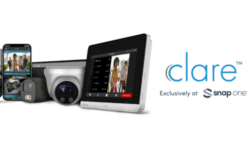ADT Reports Q2 Net Loss as Total Revenue Improves 6%
ADT CEO Tim Whall attributes the 6% revenue growth to efforts to balance top-line expansion with optimizing profitability and free cash flow.

ADT reported adjusted EBITDA in Q2 was $610 million, up 5%, or $27 million from the same period in the prior year.
BOCA RATON, Fla. — ADT (NYSE: ADT) on Wednesday reported a second quarter loss of $67 million or 9 cents a share, compared with a loss of $93 million, or 14 cents a share, in the same period the prior year.
The company attributed the improvement in net loss to growth in total revenue and lower interest expense, along with an increase in higher other income largely arising from a one-time license arrangement, partially offset by an increase in operating expenses.
The adjusted earnings per share before special items was 7 cents, compared to 11 cents in the prior year. The results missed expectations, with three analysts surveyed by Zacks Investment Research having projected Q2 earnings of 11 cents per share.
Total revenue rose to $1.13 billion from $1.07 billion in the year-ago period.
Adjusted EBITDA in the second quarter was $610 million, an increase of 5% or $27 million from the same period in the prior year. The growth in adjusted EBITDA was a result of higher monitoring and related services (M&S) revenue combined with lower net costs associated with the acquisition of customers.
The company posted adjusted net Income of $113 million, compared to $37 million in the same period in the prior year, an increase of $76 million. The improvement was due to year-over-year growth in adjusted EBITDA and lower cash interest.
During an earnings call Wednesday, ADT CEO Tim Whall said the company’s 6% revenue growth was driven by efforts to balance top-line expansion with optimizing profitability and free cash flow. “We produced higher revenues in commercial and multiside accounts through residential post penetration and had stronger retention of existing customers versus a year ago,” he continued.
Whall, an SSI Industry Hall of Fame inductee, cited a handful of the company’s largest growth initiatives during the call. These included the interactive smart home platform ADT Pulse and associated partnerships with Amazon, Z-Wave, Kwikset, Netgear, Ring, Nest and others.
Whall said interactive customers are valuable to ADT for their higher revenues and higher retention rates. During the second quarter, about three quarters of ADT’s new customers opted for Pulse, up from about two-thirds a year ago.
“The percentage of our total base now using interactive services is approaching 40%. We see embedded growth opportunities, as the 40% figure gradually moves towards the current take rate,” he said.
Reacting to a question about Google and Amazon’s DIY offerings on the market, Whall called them “great offers for – we feel for the renters for sure,” adding that consumers who are looking for only one or two devices connected to their security system are not ADT’s target customers.
“Our typical customer is buying a larger system – systems that we’ve installed this year, slightly larger and more devices than last year. I think we see the home getting more complicated. Our traditional buyer enjoys that full service of our tech,” said Whall.
Whall also mentioned ADT is continuing to pursue a DIY offering of its own in partnership with Samsung.
The company reported trailing 12-month gross customer revenue attrition improved 50 basis points year-over-year, ending at 13.6%. The improvement was due to the company’s focus on adding new high-quality customers and enhancing customer service levels in its field offices and call centers.
“We’re focused on continuing to drive attrition improvement during the seasonally active second half of the year,” Whall said. “We continue to optimize our net SAC [subscriber acquisition cost] with our customer revenue payback improving to 2.4 years versus 2.6 years a year ago on a trailing 12-month basis.”
Despite the quarterly loss, the company issued guidance that reflects continued improvement over 2017. ADT raised its full-year revenue outlook to a range of $4.5 billion to $4.55 billion. The adjusted EBITDA outlook was raised to a range of $2.425 billion to $2.435 billion. And the company raised its outlook for free cash flow before special items to a range of $500 million to $525 million.
If you enjoyed this article and want to receive more valuable industry content like this, click here to sign up for our FREE digital newsletters!

Security Is Our Business, Too
For professionals who recommend, buy and install all types of electronic security equipment, a free subscription to Commercial Integrator + Security Sales & Integration is like having a consultant on call. You’ll find an ideal balance of technology and business coverage, with installation tips and techniques for products and updates on how to add to your bottom line.
A FREE subscription to the top resource for security and integration industry will prove to be invaluable.














